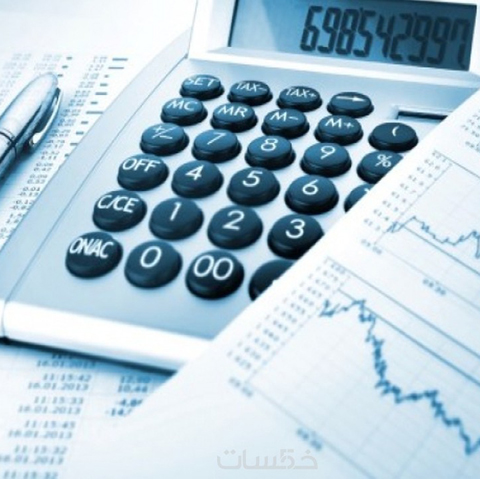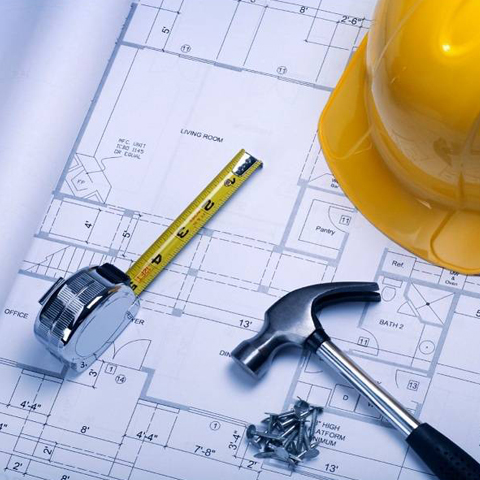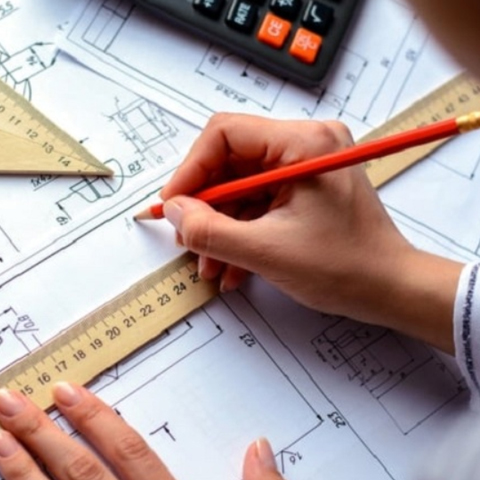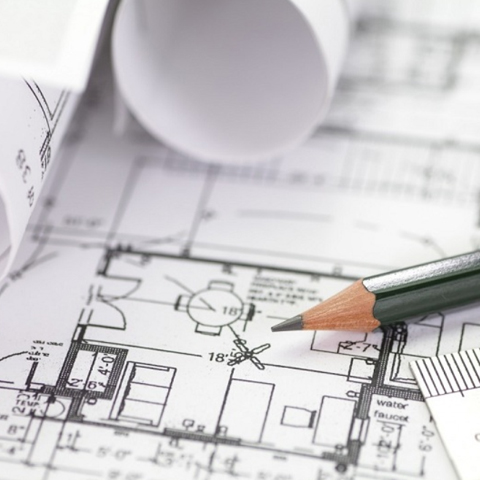
To whom are feasibility studies submitted?
Feasibility studies are submitted to local financing agencies, to a bank, to license a project or to allocate land, and we - at Tree Bell - have the experience required for that.
At the same time, we advise, as a consulting company, project owners to develop a feasibility study for their new projects, as many of them believe that it is not necessary for the project owner to develop any feasibility study for the project unless he intends to present this study to one of the financing parties, and this is unscientific thinking. It is necessary for each project to have a feasibility study before starting it, because it helps early detection of potential weaknesses in the project (the future vision of the project), and it highlights its inherent strengths and methods of employing them. Or risk it
TRIPLE is distinguished for preparing professional economic feasibility studies, as a result of relying on a cadre specialized in all areas of feasibility: a cadre of engineers - economists - accountants - financial analysts - field marketing research staff - legal professionals.
The economic feasibility study consists of the following sections:
A. Executive summary of the study.B. Marketing feasibility study.
C. Technical study of the project.
D. Studying the organizational and administrative structure
E. The legal environment for the project
F. Financial feasibility study.
G. Environmental feasibility study.
H. Sensitivity analysis of the project.
I. The final investment decision

A. Executive summary of the study
The executive summary of the study aims to provide the reader with a sincere and general perception of the components of the study in all its marketing, technical and financial aspects, as well as a summary about the results of the financial indicators, and whether the project is economically feasible or not...
The executive summary includes the following points:

B. Marketing study
The marketing study for the project is conducted by an integrated team with great experience in the marketing aspect, and includes several specialties, including: a statistical data analyst - specialized in forecasting demand and various growth rates - field researchers to collect data from the market and data on competitors.
The marketing study for the project includes each of the following aspects:

C. The technical study
The technical study of the project is very important because all of the following financial, economic, social and environmental studies depend on the technical study - indeed, these studies cannot be conducted at all without the existence of the technical study that determines the validity of the project from a technical point of view. The technical study depends to a large extent on the data and information obtained from the marketing study.
The technical feasibility study is carried out by a team specialized in technical aspects according to the type of project: engineers - chemists - specialists in medical and pharmaceutical affairs - ...
The technical study of the project includes all or some of the following parts according to the circumstances:
1- Description of services/products, ingredients and packaging methods
The preparation team in Tree Bell describes the main types of services that will be provided in the project, the features of each service and the features of its provision in service projects. In production projects, the types of products, their components, their features, and packaging methods are determined for the product that becomes ready for marketing.
2- Description of the operational process sequence: Process:Work is being done to clarify the production processes, starting with the supply and storage of raw materials in warehouses, then the stages of the production process in detail, all the way to obtaining and storing final products in preparation for sales and marketing operations. In this paragraph, we rely on the use of structural charts to clarify the sequence of operations and operations stages, as they communicate ideas more clearly to the reader of the feasibility study.
3- Determine the production or operational capacity of the project:Studies of economic feasibility work to determine the volume of production in the project and the expected production capacity. The decision to determine the volume of production is affected by the technological needs of the project, the available financial resources, the possibilities of future market change, the determination of the by-products of the project, if any, and the best use of these products to make the most of them. In addition to estimating the percentage of lost production, which is deducted from the sales value later.
4- Identification and description of production lines, devices and equipment:The equipment and machinery needed for the project are identified and described through the scientific and technical expertise of the Tri-Bell team, where we conduct the necessary correspondence with foreign manufacturing companies to obtain suitable quotations, in addition to conducting field visits to local supplying companies and explaining the requirements to obtain quotations for locally sourced devices and equipment.
5- The engineering plan of the project / sketch:Tree Bell engineers draw a sketch of the project, showing the locations of buildings and constructions for each section. Areas and location of machinery and equipment, warehouses, production hangars, administration offices, storage system for raw materials and products, car garages, and other public facilities.
6- Determine the requirements for raw materials:We calculate the project's needs for raw materials, all kinds of raw materials, additives, energy, fuel and various public utilities. Determining the quality and specifications of the required raw materials, the possibility of obtaining them and their proximity to the project site, the conditions of supply and continuity of supply in the future, determining the appropriate minimum quantities of the necessary stocks, and determining the types of fuel and energy required for the project (electricity - gasoline - diesel - butane), and prices Each of them, water and its source and prices as well.
7- Determine the location of the project:The project site options vary according to the nature of the project's work, its proposed activity, and the availability of raw materials, especially if these materials are difficult to transport. In general, the proximity of the project site to the sources of raw materials must be made in light of the comparison between the costs and ease of transporting raw materials, the costs of transporting the workforce to the project site, and the costs of transporting the project's products to the areas for their sale and disposal.
8- Determination of assets and properties:The assets required for the project consist of the following items:
- 1) Land, buildings and constructions: including:
- The option to buy and equip the land.
- Option to build and finish buildings.
- The option to implement decorations and finishes for rented buildings.
- 2) Means of transportation/cars and machinery:
The vehicles and mechanisms required for the project are determined, and they are of two types:
- Service mechanisms: their tasks contribute to the production process within the factory.
- External vehicles: They are vehicles for transporting materials, vehicles for transporting workers, and private cars.
- 3) Devices, equipment and production lines: as previously explained.
- 4) Electronic devices and software: These include:
- Computers, printers, POS devices, display screens, etc.
- Designing a website and designing a visual identity for the company - accounting software, etc.
- 5) Office furniture and equipment: This includes the necessary furniture for administration offices, workers’ rooms, buffets, and so on..
9- Determine the costs of establishing the project, including:
Incorporation costs include each of the following items:
- 1) The costs of issuing licenses and registering the project.
- 2) The costs of conducting economic feasibility studies
- 3) The costs of legal consultations during the project establishment stage.
- 4) Other costs during the establishment phase of the project, such as: recruiting workers - training workers ..
10- The timetable for establishing the project, including:
The timetable for the implementation of the project, starting with the procedures for obtaining licenses, contracting, construction and decoration works.. supplying devices, equipment and assets, and contracting with employees and suppliers of raw materials.. all the way to the start of commercial operation and production.

D. Study the organizational and administrative structure
The functional structural study of the project includes the following points:

E. project legal environment
The legal study of the project includes:

F. Environmental feasibility study .
TRIPLE presents this study to assess the environmental impact of investment projects, which aims at two aspects:
In general, there is no project that does not have environmental aspects and impacts, and therefore we must ensure the safety of the environment for the project.
Accordingly, the environmental feasibility study can show many points, the most important of which are:
- 1- Statement and detail of the environmental impacts resulting from the investment project.
- 2- Determine the depth of environmental impacts expected from each investment alternative that is supposed to be established.
- 3- Identifying the most important environmental problems that need further analysis
- 4- Determine the procedures and methods that will mitigate environmental damage

G. Financial feasibility study .
Many consider it the undisputed butter of the feasibility study - as it determines the economic indicators of the project and whether it is feasible or not..
The financial study of economic feasibility consists of the following items and components:
- 1) Determine the total fixed cost of the project: which consists of the costs of all assets mentioned in the technical study previously, in addition to the establishment expenses.
- 2) Calculating and detailing the annual operating costs of the project: It generally consists of some or all of the following items, depending on the nature of each project:
- Costs of raw materials and supplies needed to carry out the activity.
- Administrative and general expenses: These include: the cost of annual rent - communication and internet expenses - stationery, publications and inks - fees and subscriptions - general services and hospitality - labor training expenses - property insurance .. and so on.
- Utilities costs: It includes the value of necessary expenses from public utilities that were identified in the technical study (fuel - electricity - water - ..).
- Marketing costs: It includes clarifying the value of the expenses resulting from the marketing operations proposed in the marketing study of the project, with the aim of promoting its products and services and achieving the sales plan.
- Salaries and wages costs: as previously stated in the organizational and administrative study.
- Annual depreciation costs: where the depreciation schedule of the project's capital assets is listed, specifying the depreciation percentage and the final depreciation value.
- 3) Studying fixed costs and variable costs (related to the rate of production capacity) and scheduling them over a period of 5-10 years.
- 4) Studying the revenues generated by the project (quantities * prices = revenues) when operating at maximum capacity of 100%, as well as scheduling them over a period of 5-10 years, taking into account the average annual operating capacity, the amount of inventory and the quantity of products actually sold. >
- 5) Determine the unit cost of the product for each product in the project, as well as compare it with the selling price and determine the achieved profit margin.
- 6) Studying the income statement (profits and losses, P&L Profit and Loss) to reach the annual net profits and schedule them over a period of 5-10 years.
- 7) Calculating the economic indicators of the project, supported by tables and charts, especially the cumulative profits scheme and the capital payback period.

H. Sensitivity analysis of the project .
This study discusses the extent to which the final economic indicators of the project are affected by changing some of the financial assumptions on which the study was based, and thus reaching knowledge of the limit values that the project should not exceed in order to remain within the safe side so that the project achieves good profits.< /p>
The decision-maker can determine how sensitive the return of the proposed project is, for example, to changes that may occur in the value of any of the given variables. If the net present value is sensitive to the variables used, then the proposed project is sensitive to conditions of uncertainty.
When using the sensitivity analysis method, the following issues must be taken into account:
- 1. Determine the main variables that affect the criterion or criteria used in the evaluation.
- 2. Determine the mathematical relationship between the variables.
- 3. Estimating the most optimistic or most pessimistic values for these variables.
- 4. Calculating the criteria used in the evaluation process under conditions of uncertainty.
- 5. It is necessary to focus on estimating the most optimistic and most pessimistic values of the values of the specified variables, and not all the possibilities of those values.
Usually, the sensitivity analysis of the project is studied according to several cases as follows:
The new indicators are studied for each case at several percentages of increase and decrease in deviation, and the percentages are limited to between -40% and up to +40%, or as the preparation authority sees it, depending on the nature of the project.
At Tree Bell, we schedule the new indicators and draw supporting charts with the aim of informing the client and facilitating comparison between these cases, and the possibility of noticing the critical and dangerous cases on the project in order to work to avoid them during the implementation of the project.

I. The final investment decision.
At the end of the economic feasibility study of the project, Tree Bell reached the final decision regarding investment in the project in the light of the results shown by all the study items (marketing - technical - administrative - financial - sensitivity analysis...) equally.
- If all of these results are positive and encouraging, then the investment decision is to recommend starting the project.
- In the event that negative results appear in those items individually or in combination, then the situation is estimated by the preparation team at Tree Bell in terms of the extent of the negative impact that will be reflected on the success of the project and its continuity in its work environment, and accordingly the final decision is taken About recommending starting the project or recommending searching for an alternative opportunity with a better investment evaluation.
